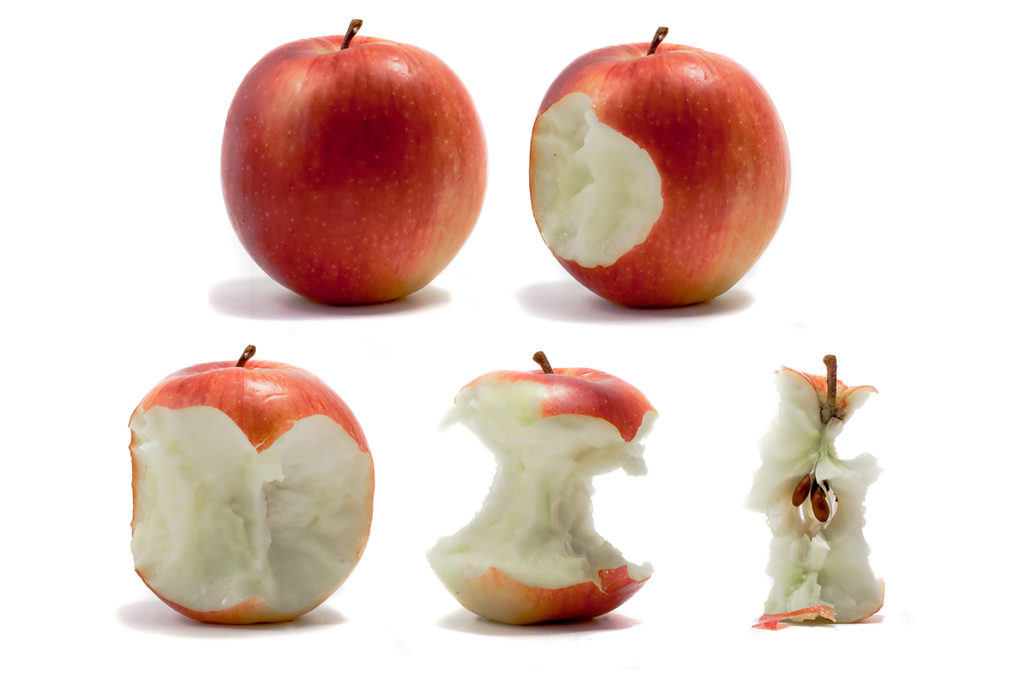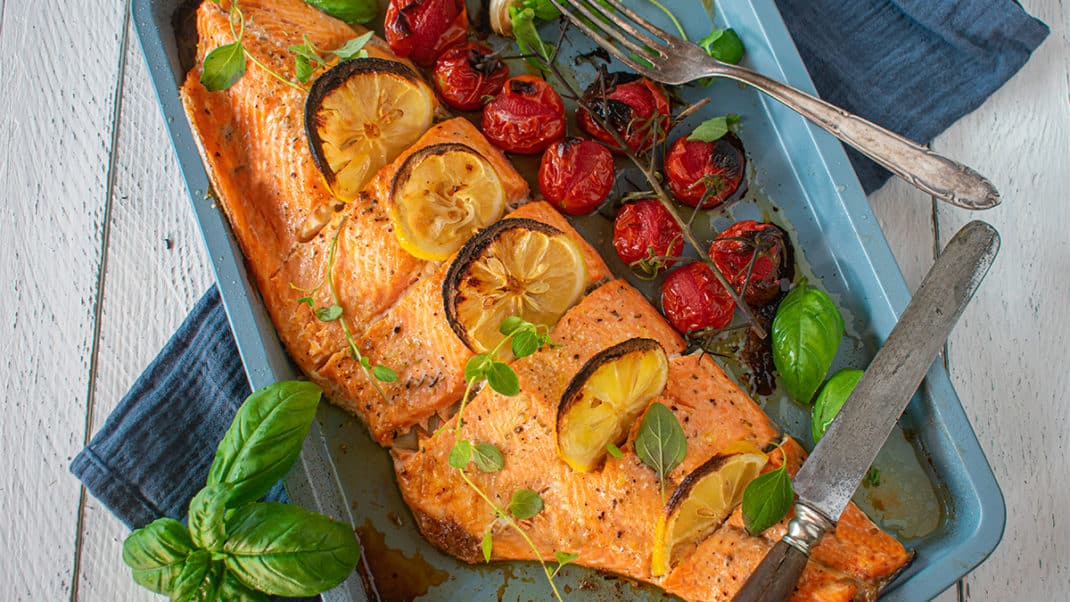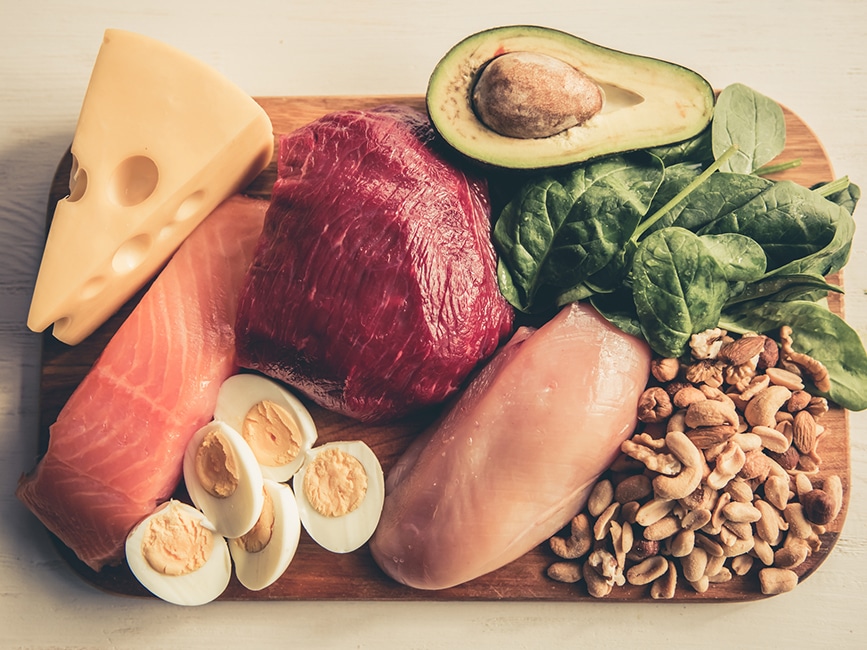A “Whole” Apple a Day
Why food form matters in the battle against hunger pangs.

When it comes to weight loss, hunger is often an enemy that needs to be slain. One way people can stay feeling full longer and, in turn, consume fewer calories is to carefully consider the form of their food.
British food scientists provided 18 healthy adults with the same number of calories (178) from whole apples, apple purée or apple juice on three separate occasions and then measured gastric emptying rates and indicators of fullness and satiety post-meal. The outcome was that the whole apples resulted in slower digestion rates as well as increased feelings of fullness and satiety post-ingestion.
The extra work that the body does to deal with the less “processed” whole apple, including increased chewing and digestion, likely contributes to its hunger-fighting power. This same satiety-boosting trick can be applied to other similar types of food, such as steel-cut oats versus instant oats, whole oranges versus orange juice, and whole peanuts versus peanut butter.
See also: Is It Time to Replace Fruit Juice With Whole Fruit?
Matthew Kadey, MS, RD
Matthew Kadey, MS, RD, is a James Beard Award–winning food journalist, dietitian and author of the cookbook Rocket Fuel: Power-Packed Food for Sport + Adventure (VeloPress 2016). He has written for dozens of magazines, including Runner’s World, Men’s Health, Shape, Men’s Fitness and Muscle and Fitness.





